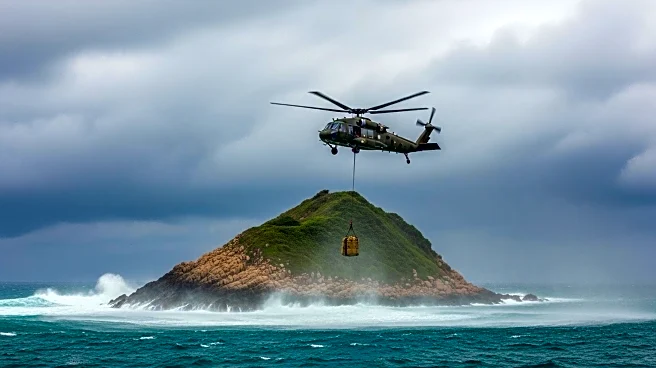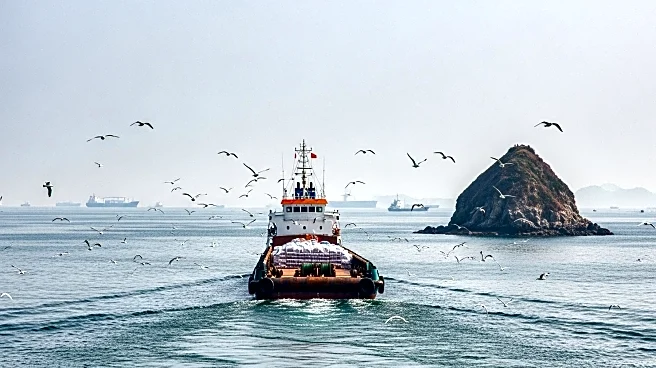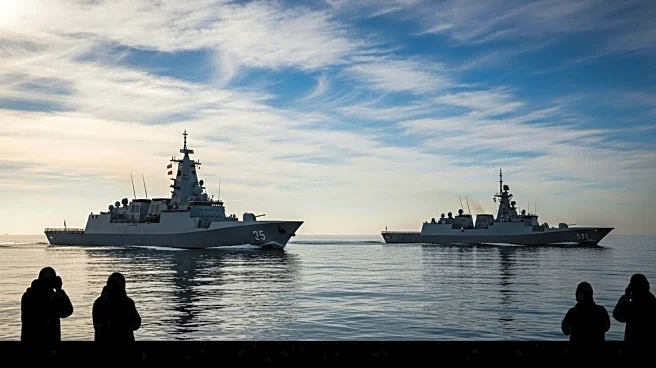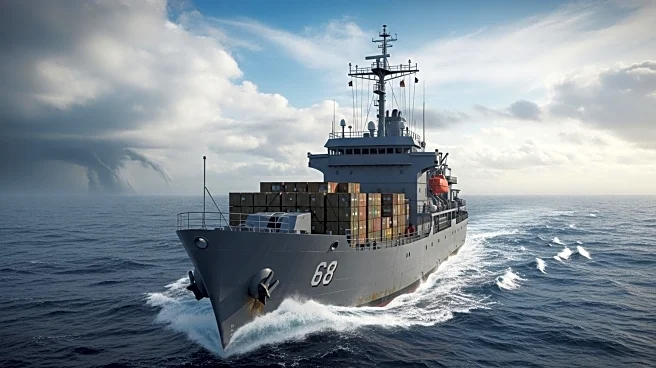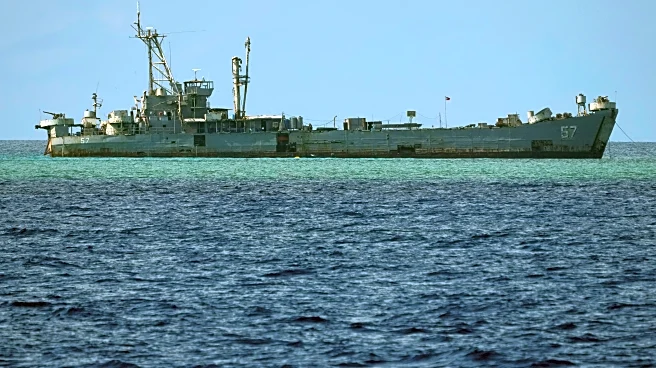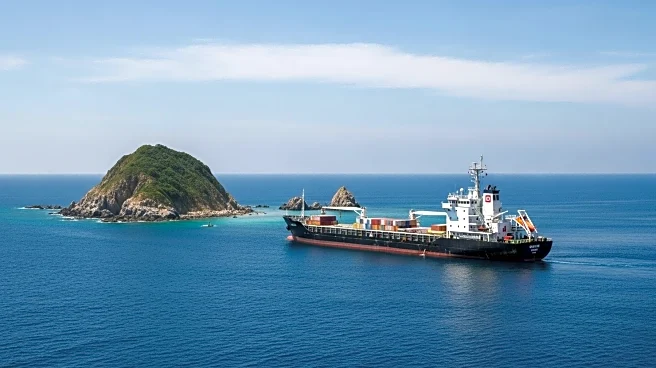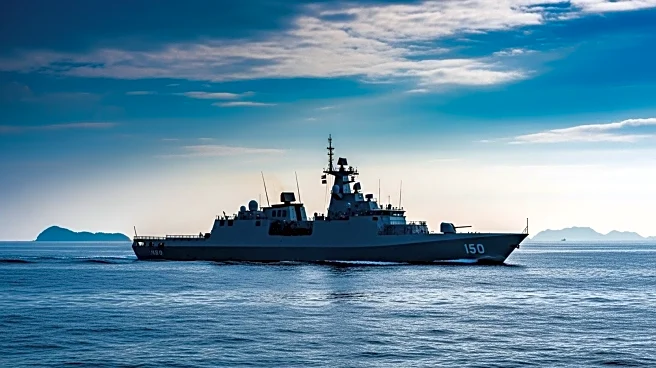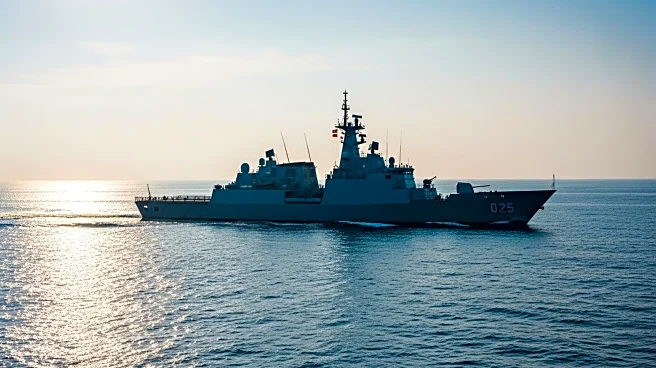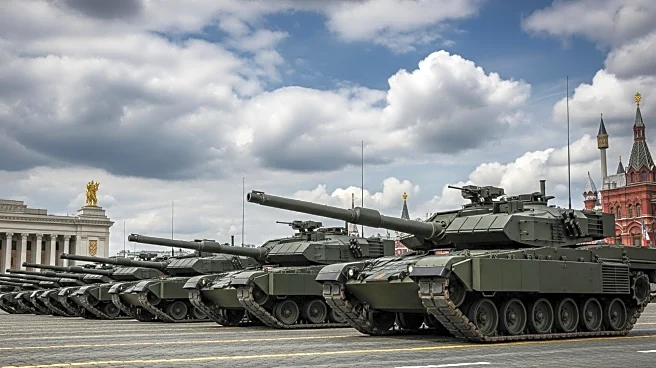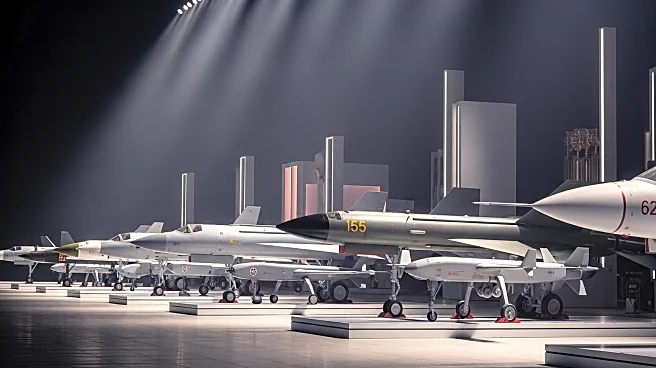What's Happening?
The Philippine military has successfully completed a logistical operation to deliver essential supplies, including food and fuel, to the Second Thomas Shoal in the South China Sea. This operation was carried out despite escalating tensions with China, which has recently increased its military presence in the area through water cannon drills and additional coast guard deployments. The delivery was executed without incident, although it had been delayed for several weeks to ensure safety. During this time, two U.S. Navy destroyers were also patrolling the region, though no direct connection between the U.S. and Philippine operations was confirmed. The Second Thomas Shoal is a strategic outpost for the Philippines, marked by the presence of the BRP Sierra Madre, a grounded warship symbolizing the country's territorial claims. The situation remains tense as China continues to assert its sovereignty over the area, demanding the removal of the Philippine vessel.
Why It's Important?
This development is significant as it underscores the ongoing territorial disputes in the South China Sea, a critical maritime region with overlapping claims from multiple countries, including China, the Philippines, Vietnam, Malaysia, Brunei, and Taiwan. The successful delivery by the Philippine military highlights the country's determination to maintain its territorial claims despite Chinese pressure. The presence of U.S. naval forces in the area further complicates the geopolitical dynamics, as the United States has a mutual defense treaty with the Philippines, potentially involving it in any armed conflict. The South China Sea is a vital trade route, and any escalation could have far-reaching implications for international trade and regional stability. The situation also tests the effectiveness of diplomatic efforts to manage tensions and prevent conflict.
What's Next?
The ongoing standoff is likely to continue, with the potential for further confrontations between Philippine and Chinese forces. The Philippines may seek to strengthen its military presence and alliances, particularly with the United States, to deter further Chinese aggression. Diplomatic efforts will be crucial in managing the situation, with regional and international stakeholders likely to engage in dialogue to prevent escalation. The U.S. may also increase its military presence in the region to reassure its allies and assert freedom of navigation in the contested waters. The situation remains fluid, with the potential for both diplomatic breakthroughs and increased tensions.
Beyond the Headlines
The territorial dispute in the South China Sea raises broader questions about international law and the enforcement of maritime boundaries. The Philippines' actions, supported by international law, challenge China's expansive claims, which have been deemed inconsistent with the United Nations Convention on the Law of the Sea. The situation also highlights the strategic importance of the South China Sea, not only for regional players but also for global powers like the United States, which has vested interests in maintaining open sea lanes and regional stability. The ongoing tensions could lead to a reevaluation of military strategies and alliances in the Asia-Pacific region.
